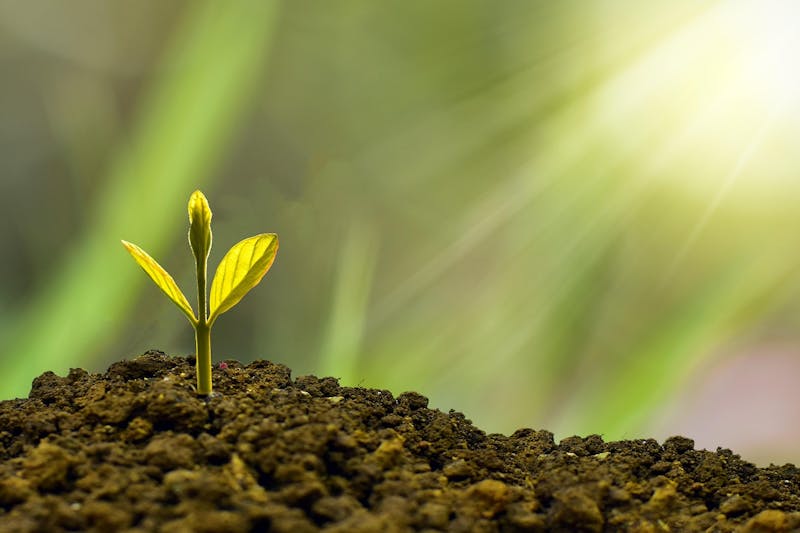Do you remember the rise of NFTs a few years ago? Digital art, collectibles, and music have all been transformed into unique tokens. The excitement was everywhere. But there were also concerns. When people started analyzing the data, they discovered a startling fact. Creating just one NFT could use the same amount of energy that a house uses in thirty days. The main culprit was proof-of-work blockchain technology, like the early version of Ethereum. These systems required miners to solve difficult computational problems that consumed electricity. Naturally, this raised serious concerns about the environmental footprint of NFTs.
But now it's 2025 and things have changed. NFTs are becoming increasingly environmentally friendly as artists, platforms and investors pay attention to sustainability. We are seeing new NFT releases that enable creative work without environmental concerns. This isn't just for show. It's a real shift that is changing the way we look at digital property.
The shift to more environmentally friendly blockchains
The real change occurred when technology reached a point where it could support that change. The Ethereum network switched to proof-of-stake operations in 2022, resulting in a 99% reduction in its power consumption. After switching from Ethereum, the blockchain industry took two approaches. They have either adopted sustainable design principles during development or followed Ethereum's transition to proof-of-stake. The Tezos network operates with minimal energy consumption as it has always used this approach. The platform is growing in popularity among artists looking to reduce their environmental footprint.
Platforms like fxhash and Objkt.com offer generative art, experimental music and interactive pieces, all at a very low environmental cost. Polygon offers another good choice. It's fast, affordable and environmentally conscious. It supports everything from gaming assets to brand partnerships without a major environmental impact. Solana, Flow and Algorand complete the group, each with a focus on efficiency and scalability. Large marketplaces like OpenSea have also noticed this trend. They have launched special green collections to meet the growing demand from eco-conscious shoppers.
Why pre-sales are important in the green NFT space
If you're thinking about getting involved early, this is where things get exciting. Many of the best eco-friendly NFT projects start with pre-sales. These are special periods in which tokens, assets or access are offered before they are available to everyone. These are not random releases. They are usually associated with sustainable cryptosystems based on platforms such as Polygon, Solana or Cardano. Imagine projects that actually do something useful: tracking carbon credits, verifying renewable energy, or creating community-owned virtual land. With these pre-sales you can shop at lower prices, receive additional benefits and support initiatives that care about our planet. It's not just a matter of guessing what might be valuable; It supports meaningful innovations that make a difference.
Outstanding eco-friendly NFT projects in 2025
So which projects actually deliver what they promise? Here are a few that make a real impact without harming the environment:
- fxhash (Tezos): On this platform, generative artists can upload code and collectors can mint unique pieces. Energy consumption is minimal. A recent AI-themed release sold out quickly.
- Lens Protocol Collectibles (Polygon): This social tokens Help creators build communities in a sustainable way, with very low fees, environmentally friendly and engage people.
- The Sandbox LAND (Polygon): It offers virtual land in a growing metaverse. You are the permanent owner of your property and the impact on energy is minimal.
- Objkt.com drops (Tezos): This marketplace on Tezos focuses on art and teamwork. It is a space for mindful creatives featuring photography and 3D art.
The numbers speak for themselves. In the second quarter of 2025, eco-friendly NFTs saw a 60% increase in trading volume on platforms such as Tezos and Polygon. This is not just a random increase. It shows that collectors actively select art that reflects their personal values.
Invest with a conscience
Are you thinking about green crypto? It's worth doing your research before investing. Just because something is green doesn't mean it's risk-free, but it's a solid foundation. Look for projects with transparent roadmaps, functioning development teams, and practical applications. Joining during the pre-sale can make sense, especially for sustainable infrastructure projects. There are often bonuses such as carbon offsetting initiatives or renewable energy partnerships. Markets will fluctuate, but the long-term outlook is positive. Given the tightening of regulations and the growing demand for transparency, these projects have a great chance of success.
Diploma
NFTs are definitely here to stay, but they're changing in some really positive ways. Remember when people worried about how much energy they were using? Well, that's changing quickly. New platforms like Tezos, Polygon and Solana prove that digital innovation can actually be good for our planet.
Artists build successful careers in this field. Collectors are excited to see what happens. And if you're thinking about getting involved early, especially in presales, you might be in a good position for what comes next.
If you care about both creativity and our environment, now is the perfect time to pay attention. The future of NFTs is not only exciting, but definitely sustainable.
